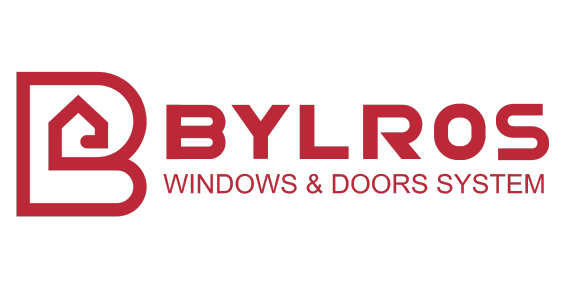The Challenge of Maintaining Glass Facades in Hot Climates
Glass facades have become a hallmark of modern architecture, offering sleek aesthetics, natural lighting, and expansive views. However, when it comes to how to maintain glass facades in hot climates, building owners and facility managers face unique challenges. High temperatures, intense UV exposure, dust, and humidity can cause damage, reduce transparency, and shorten the lifespan of glass structures.
Whether you’re managing a commercial tower in Dubai, a beachfront villa in Miami, or an office building in Phoenix, understanding the best practices for maintaining glass facades is essential. This article will guide you through expert strategies to preserve the beauty, efficiency, and durability of your building’s glass exteriors—no matter how harsh the sun gets.

Choosing the Right Glass for Hot Climates
One of the most critical factors in maintaining glass facades in hot climates begins before the building is even completed: selecting the right type of glass. Not all glass is created equal, especially when dealing with extreme heat and solar exposure.
Use Solar Control or Low-E Glass
- Low-E (low-emissivity) glass has a thin coating that reflects heat while allowing natural light to pass through, keeping interiors cooler and reducing the load on air conditioning systems.
- Solar control glass minimizes the amount of infrared and ultraviolet light that enters the building, which protects interiors from fading and reduces thermal stress on the facade.
Consider Double or Triple Glazing
Insulated glazing units (IGUs) with multiple glass layers separated by gas-filled spaces provide:
- Better thermal insulation
- Reduced condensation
- Noise control
These features not only reduce energy costs but also minimize temperature-related wear and tear on the facade over time.
💡 Tip: If you’re retrofitting a building in a hot climate, switching to high-performance glass can be a long-term investment that saves energy and reduces maintenance.
Regular Cleaning and Maintenance Schedule
How to maintain glass facades in hot climates largely depends on how regularly and properly you clean them. Dust, pollutants, salt (in coastal areas), and bird droppings can accumulate quickly and damage the surface.
Establish a Routine Cleaning Schedule
- Frequency: Clean glass facades every 1-2 months in arid or urban areas and every 2-3 weeks in coastal regions.
- Time of Day: Schedule cleaning during early mornings or late afternoons to avoid streaks caused by rapid drying in high temperatures.
- Tools & Techniques: Use deionized water with telescopic poles or pure water-fed systems to prevent spotting. Avoid abrasive materials that may scratch or dull the surface.
Use Appropriate Cleaning Solutions
In hot climates, strong cleaners can evaporate too quickly, leaving streaks or chemical residues. Instead, use:
- pH-neutral cleaning agents
- Biodegradable window cleaners
- Anti-static coatings to reduce future dust buildup
Inspect for Damage
During each cleaning:
- Check seals for wear or deterioration
- Look for cracks or chips caused by thermal expansion
- Ensure that framing elements and joints remain watertight
🔍 Pro Tip: Hire professional facade maintenance services twice a year for thorough inspections and cleaning in high-rise buildings.
Protecting Against Thermal Stress and UV Damage
High temperatures and strong UV rays can cause thermal stress, leading to cracking, warping, or even shattering of glass panels. Preventive measures can drastically extend facade life.
Apply UV-Protective Films or Coatings
Glass films are a cost-effective way to:
- Block up to 99% of harmful UV rays
- Reduce heat gain by reflecting infrared rays
- Lower indoor temperatures and protect furniture
These can be retrofitted on existing glass and come in tinted or clear options.
Use Shading Devices
Incorporate architectural shading elements like:
- Overhangs
- Louvers
- External blinds
These structures reduce direct solar radiation on glass panels, helping maintain interior comfort and reducing the risk of damage.
Install Smart Glass Technologies
Electrochromic or photochromic glass adjusts tint based on sunlight intensity. Benefits include:
- Enhanced energy efficiency
- Protection from glare
- Extended glass lifespan due to reduced heat absorption
Additional Tips: Long-Term Glass Facade Maintenance in Hot Climates
Perform Annual Energy Audits
Monitoring your building’s energy performance helps:
- Identify areas of glass that might be underperforming
- Spot air leaks or insulation problems
- Plan retrofitting for better heat control
Maintain Air Gaps and Silicone Seals
Ensure that:
- Seals are not degraded by UV rays
- Silicone or weatherproofing remains flexible
- Air gaps are properly insulated to prevent heat bridging
Avoid Over-Washing
Excessive cleaning, especially using harsh chemicals or power washers, can weaken glass coatings or seals. Stick to a scheduled plan, and only increase cleaning frequency if environmental conditions demand it.
Glass Facade Maintenance Checklist for Hot Climates
| Task | Frequency | Notes |
|---|---|---|
| General cleaning | Monthly | Use pH-neutral or deionized water |
| Professional inspection | Bi-annually | Check for cracks, leaks, and sealant failure |
| UV film/coating check | Annually | Replace or renew damaged or worn sections |
| Sealant replacement | Every 5 years | Especially important in high-sun or salt-air regions |
| Glass and frame inspection | Bi-annually | Look for signs of warping or structural issues |
External Resources for Further Reading
-
Energy-efficient glass for commercial buildings (U.S. DOE) – Learn about glass options that reduce solar heat gain.
-
How to clean glass facades professionally (LinkedIn article) – External guide on cleaning techniques.
Conclusion: Take Control of Glass Facade Maintenance in Hot Climates
Maintaining glass facades in hot climates requires a proactive, strategic approach. By choosing the right materials, implementing a consistent maintenance routine, and protecting against thermal and UV stress, you can significantly extend the lifespan and performance of your glass facade.
Don’t wait until damage is visible—start your maintenance plan today.
🔥 Ready to Upgrade Your Building’s Glass Facade Maintenance?
Visit our Faq or contact a local facade expert to schedule an inspection and protect your investment for the long haul.


